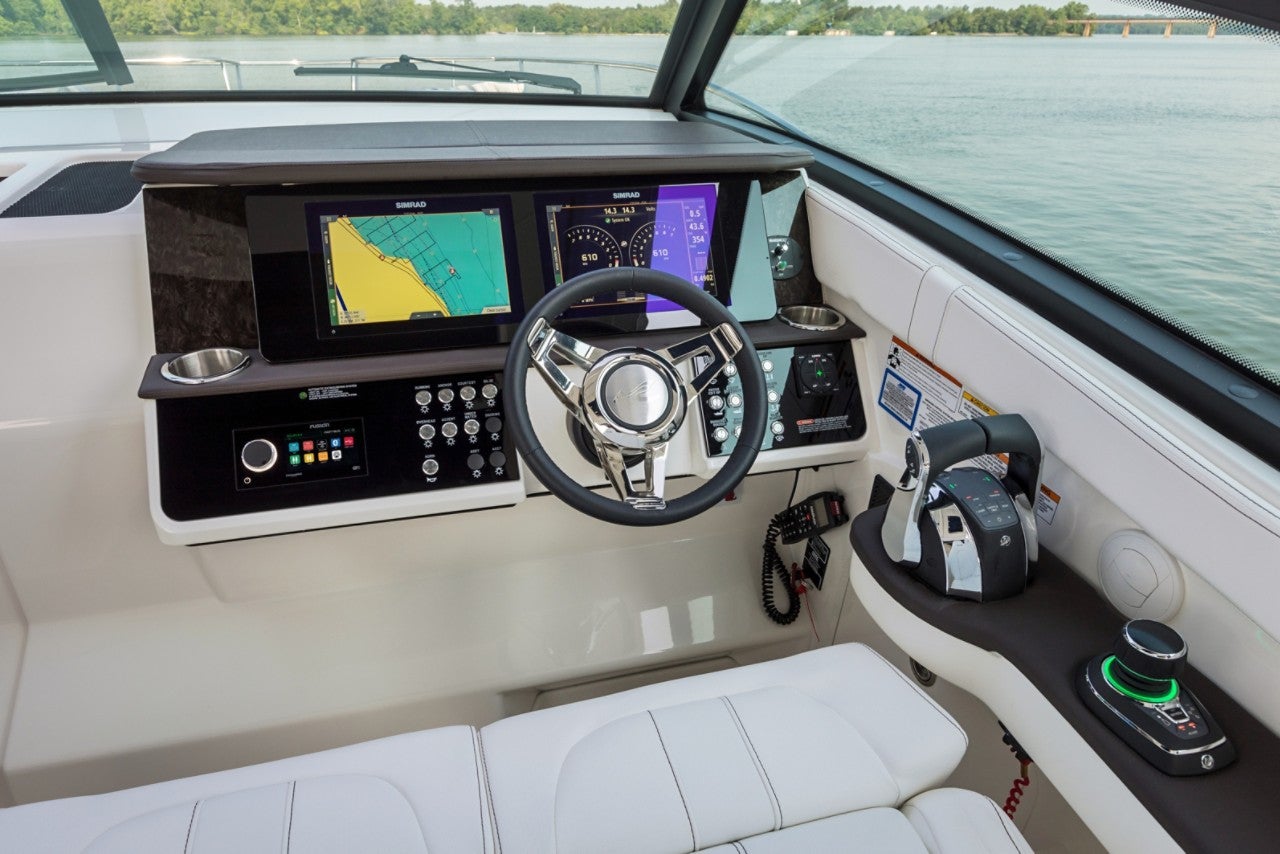How to use a marine VHF radio on your Sea Ray boat
The VHF (very high frequency) radio aboard your Sea Ray is a critical piece of communications equipment that may save your life. VHF radios can be fixed (mounted to the boat with a remote antenna) or handheld (portable with a built-in antenna). Fixed radios operate up to 25 watts of power and can reach 25 miles depending on the height of the antenna, while handhelds operate at 1 or 5 watts of power for closer communications.
VHF radios are “line-of-sight” which means they don’t broadcast around island corners or out of deep narrow inlets, but they have distinct advantages over cellphones including providing easy and reliable vessel-to-vessel and vessel-to-shore communications, being monitored by other boaters as well as the Coast Guard, and being fully waterproof.
A primer on VHF radio protocol:
- Turn the VHF on and dial the squelch until you no longer hear static.
- Press and hold the PTT (push-to-talk) button, wait 2 seconds and begin speaking. Release the button when done with your transmission.
- When calling another vessel or land station, say their name three times and then say the name of your vessel once.
- Be brief and precise in your boat-to-boat communications.
- Say all numbers one digit at a time. For example, Channel 6-8 rather than sixty-eight.
- Learn and use the phonetic alphabet when speaking on the VHF.
- Say “over” at the end of your communication and wait for a response.
- Learn the differences between a Mayday, Pan-Pan and Securite.
- A Mayday is issued in case of critical damage or threat to the vessel or personnel, including medical emergencies, fire aboard, collision with injuries or a potential sinking. Don’t use Mayday unless it’s a real emergency. On Channel 16, say Mayday three times followed by the name of your vessel. Report your location, the nature of the emergency, the number of people aboard, any injuries or medical issues, and a description of the boat.
- Call a Pan-Pan when the situation is urgent (but not life threatening) or to issue information on a hazard or other navigational topic. Report your location and the nature of the situation.
- A Securite is issued by the Coast Guard and is used to transmit information to boaters in a specific area regarding weather alerts or hazards to navigation.
- Channel 16 is the hailing and distress channel. Use it to make contact and then ask to switch to another working channel like 68 or 72.
- While boating, keep your VHF on and monitor Channel 16. You may benefit from a Securite or hear a Mayday or Pan-Pan in your area.
- Don’t use Channel 16 for extended non-emergency conversations.
- Use Channel 9 (not Channel 16) for radio checks (to test if your VHF radio is transmitting).
- The VHF is a one-to-many form of communication which means others can hear you. Don’t transmit sensitive financial information like credit card numbers.
- Per VHF radio regulations, it’s illegal to transmit a false distress alert and it’s bad form to use Channel 16 for idle chit chat.
- Most recreational boaters operating in the US don’t need a license to use a VHF radio.
Sea Ray has partnered with Simrad® marine electronics so maritime radio communications and navigation information are integrated into a seamless user experience. The Simrad GO Series brings together GPS, sonar, radar, autopilot and communications in an intuitive system that builds confidence for Sea Ray owners.
The functionality of Simrad’s VHF models varies but may include AIS (Automatic Identification System) functionality that shows surrounding AIS-equipped vessels as well as broadcasting your position to other vessels for collision avoidance purposes. Another feature of Simrad radios is DSC (digital selective calling) that transmits your location automatically to the Coast Guard at the push of one button when the radio has an internal GPS or is linked to a chartplotter. Using VHF radio etiquette on a boat is a basic skill to master to enhance safety and enjoy your time on the water.
--
This is for general information purposes only. Your use or reliance on any of the information in this Blog is solely at your own risk. Under no circumstance will we have any liability for any loss or damage of any kind incurred as a result of the use of any of the information provided.
Options and features mentioned subject to change. Please confirm availability of all accessories and equipment with an authorized Sea Ray dealer.
